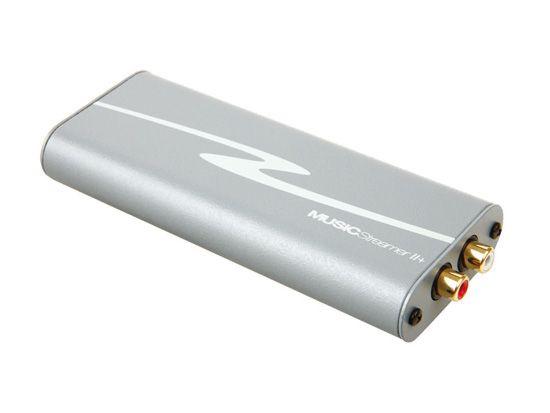Hrt Music Streamer Ii+ (£290)

When circumventing a computer’s low quality internal audio processing and pushing out digital audio to an external DAC, there’s nothing more convenient to use than something like the USB-powered Streamer II+ from Californian company High Resolution Technologies (HRT). This is especially true when you consider that the unit boasts asynchronous USB inputs. Here, the DAC’s master clock isn’t synchronised directly to any clocks within the computer. Rather, the DAC’s clock keeps its timing constant and controls the flow of data sent by the computer.
The 2011 version of the Streamer II+ provides LEDs indicating the sampling frequency of incoming data. This may seem trivial, but it’s all too easy to have files being inadvertently downsampled. To ensure bit-perfect replay of audio at native sampling frequencies – including CD rips played at 44.1kHz and not resampled to 48kHz – one needs the DAC to confirm the status of the data it’s receiving from the host PC.
HRT claims to have spent several months tweaking its new Streamer II+. Says company cofounder Kevin Halverson, ‘I made a small improvement to the clock generator, but not one that has a large impact on the jitter spectra. The improvements in this 2011 version are in areas outside of the asynchronous USB interface and its clocking scheme. Such as the I-to-V (current-to-voltage) stage – much lower distortion; the reconstruction filter, which sees better stop band performance; and the analogue output amplifier – lower distortion, noise and output impedance. This is combined with improvements to the power supplies.’
EASY DOES IT
It was enlightening to hear HRT’s £160 entrylevel Streamer II and £290 Streamer II+ side by side. Paul Rodgers’ ‘electric version’ of the song ‘Muddy Water Blues’ from a WAV rip of his Muddy Water Blues CD [Victory Music 828 414-2] was served up with an increased sense of ease by the Streamer II+, with greater dynamic shading and more extended bass. The superior realism of the sound of the cymbals was far from subtle, while the decaying reverberation tails were more clear in resolution.
Where Rodgers’ trio of backing singers sounded hard-edged and thin in the track’s mix via the Streamer II, they appeared altogether more like real people singing when played through the Streamer II+, their voices less compressed and positioned not so far back in the soundstage. And the digital rough edge had gone, the balance demonstrating a more analogue-type smoothness.
Another somewhat different example of the II+’s added refinement compared with the cheaper II model was its ability to resolve the fine detail in a 24- bit/96kHz recording of ‘Bridge Over Troubled Water’ performed by Iver Kleive on the organ of Bergen Cathedral, taken from the soundtrack to the Norwegian film deUSYNLIGE – aka Troubled Water [2L label]. This is available as a download from from www.2l.
With this track the II+ allowed my system to create a holographic image of the cathedral’s acoustic space, with beautiful detailing of the tonal textures of the voices from the organ’s ranks. What’s more, the energy delivered from the largest organ pipes was tremendous.
VERDICT
This is a great DAC with tremendous performance, considering that it’s powered via USB. For a main system DAC you might be better off buying something like Arcam’s mains powered rDAC that offers additional S/PDIF inputs for other sources. But if you only require a USB input, simply for hooking up a computer, the Streamer II+ is ideal – and oh-so-easy to pop into your laptop bag when visiting friends for a musical evening.
Originally published in the Yearbook 2011


























































